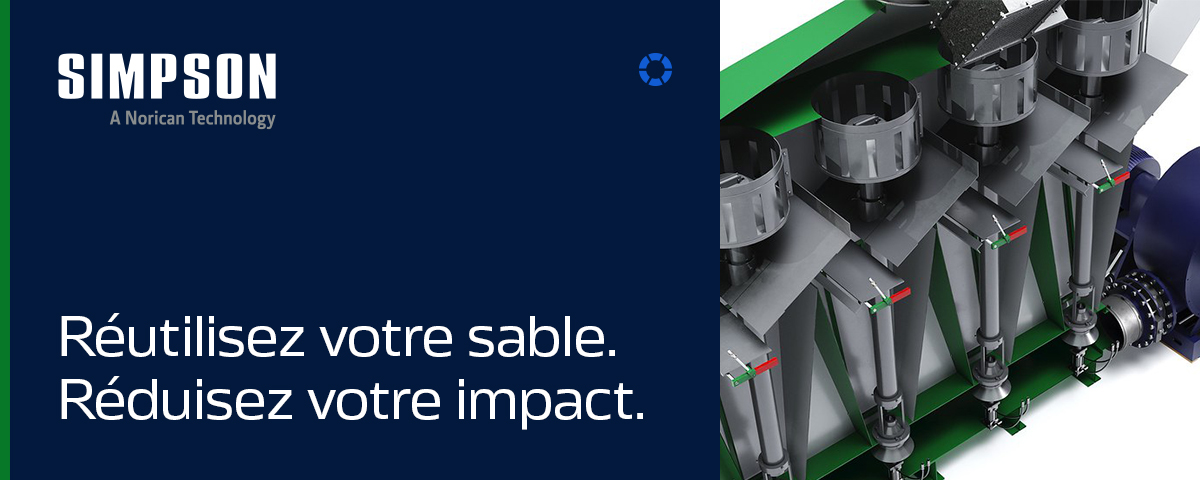Références
[1] Rao, T. V. R., 2007, Metal Casting: Principles and Practice, New Age International.
[2] Sama, S. R., Wang, J., and Manogharan, G., 2018, “Non-Conventional Mold Design for Metal Casting Using 3D Sand-Printing,” J. Manuf. Process., 34, pp. 765–775.
[3] Sama, S. R., Badamo, T., Lynch, P., and Manogharan, G., 2019, “Novel Sprue Designs in Metal Casting via 3D Sand-Printing,” Addit. Manuf., 25, pp. 563–578.
[4] Dispinar, D., and Campbell, J., 2007, “Effect of Casting Conditions on Aluminium Metal Quality,” J. Mater. Process. Technol., 182(1–3), pp. 405–410.
[5] Campbell, J., 2015, Complete Casting Handbook: Metal Casting Processes, Metallurgy, Techniques and Design, Butterworth-Heinemann.
[6] Schwab, K., 2017, The Fourth Industrial Revolution, Currency.
[7] Wang, J., Sama, S. R., and Manogharan, G., 2019, “Re-Thinking Design Methodology for Castings: 3D Sand-Printing and Topology Optimization,” Int. J. Met., 13(1), pp. 2–17.
[8] Hackney, P. M., and Wooldridge, R., 2017, “Characterisation of Direct 3D Sand Printing Process for the Production of Sand Cast Mould Tools,” Rapid Prototyp. J., 23(1), pp. 7–15.
[9] Sama, S. R., Badamo, T., and Manogharan, G., 2020, “Case Studies on Integrating 3D Sand-Printing Technology into the Production Portfolio of a Sand-Casting Foundry,” Int. J. Met.,14(1), pp. 12–24.
[10] Woods, K., Giese, S., and Trikha, S., 2019, “Feasibility of US Foundry Supply Chain Consumables for Three-Dimensional Sand Printing,” Int. J. Met., 13(3), pp. 500–503.
[11] Lynch, P., Hasbrouck, C., Wilck, J., Kay, M., and Manogharan, G., 2020, “Challenges and Opportunities to Integrate the Oldest and Newest Manufacturing Processes: Metal Casting and Additive Manufacturing,” Rapid Prototyp. J., 26(6), pp. 1145–1154.
[12] Sivarupan, T., Upadhyay, M., Ali, Y., El Mansori, M., and Dargusch, M. S., 2019, “Reduced Consumption of Materials and Hazardous Chemicals for Energy Efficient Production of Metal Parts through 3D Printing of Sand Molds,” J. Clean. Prod., 224, pp. 411–420.
[13] Sutaria, M., Joshi, D., Jagdishwar, M., and Ravi, B., 2011, “Feeding System Design and Evaluation Using Temperature Gradient (Feed Path) Maps,” Am. Foundry Soc., 9.
[14] King, P., Martinez, D., and Manogharan, G. P., 2020, “Novel Sprue Designs to Reduce Casting Defects in Nickel-Aluminum Bronze: A Computational Study,” ASME International.
[15] Carlson, K. D., Hardin, R. A., Ou, S., and Beckermann, C., 2002, “Development of New Feeding-Distance Rules Using Casting Simulation: Part I. Methodology,” Metall. Mater. Trans. B, 33(5), pp. 731–740.
[16] Ravi, B., 2005, Metal Casting: Computer-Aided Design and Analysis, PHI Learning Pvt. Ltd.
[17] Shouzhu, O. U., Carlson, K. D., and Beckermann, C., 2005, “Feeding and Risering of High-Alloy Steel Castings,” Metall. Mater. Trans. B Process Metall. Mater. Process. Sci., 36(1), pp. 97–116.
[18] Kumar, S., and Tewari, S. P., 2018, “Metallurgical and Mechanical Characterization of A319 Aluminum Alloy Casting Solidified Under Mold Oscillation,” Int. J. Met., 12(1), pp. 28–35.
[19] Nandi, T., Behera, R., Kayal, S., Chanda, A., and Sutradhar, G., 2011, “Optimization of Riser Size of Aluminium Alloy (LM6) Castings by Using Conventional Method and Computer Simulation Technique,” Int. J. Sci. Eng. Res., 2(11).
[20] Barkhudarov, M., “Advanced Simulation of the Flow and Heat Transfer Processes in Simultaneous Engineering,” Citeseer, (Fig 1), pp. 1–15.
[21] Flow Science, Inc., Santa Fe, NM, USA. FLOW-3D® Version 12.0 Users Manual (2018) [Online].
[22] Sama, MacDonald, Voigt, and Manogharan, 2019, “Measurement of Metal Velocity in Sand Casting during Mold Filling,” Metals (Basel)., 9(10), p. 1079.
[23] Runyoro, J., Boutorabi, S. M. A., and Campbell, J., 1992, “Critical Gate Velocities for Film-Forming Casting Alloys: A Basis for Process Specification,” AFS Trans, 100, pp. 225–234.






